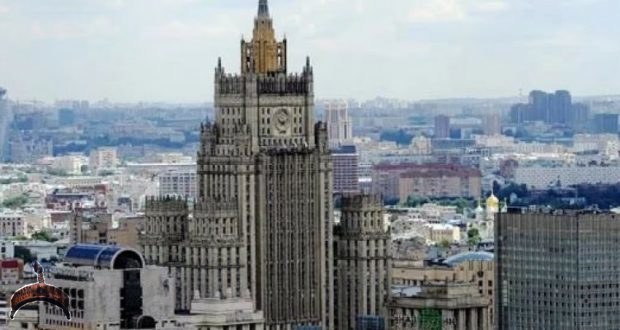Part five – another truism: there is a difference between excellent, good, average, bad and terrible
Even if the situation in Russia has changed for the worse, this is hardly a reason to engage in the usual “Putin sold out” hysteria or to declare that “Russia caved in”. Even when things are bad, there is still a huge difference between bad and worse. As of right now, Putin is not only the best possible person to be the President of Russia, Russia also continues to be the objective leader of the resistance to the Empire. Again, the black-and-white “Hollywood” type of mindset entirely misses the dynamic nature of what is going on. For example, it is quite clear to me that a new type of Russian opposition is slowly forming. Well, it always existed, really – I am talking about people who supported Putin and the Russian foreign policy and who disliked Medvedev and the Russian internal policies. Now the voice of those who say that Putin is way too soft in his stance towards the Empire will only get stronger. As will the voices of those who speak of a truly toxic degree of nepotism and patronage in the Kremlin (again, Mutko being the perfect example). When such accusations came from rabid pro-western liberals, they had very little traction, but when they come from patriotic and even nationalist politicians (Nikolai Starikov for example) they start taking on a different dimension. For example, while the court jester Zhirinovskii and his LDPR party loyally supported Medvedev, the Communist and the Just Russia parties did not. Unless the political tension around figures like Kudrin and Medvedev is somehow resolved (maybe a timely scandal?), we might witness the growth of a real opposition movement in Russia, and not one run by the Empire. It will be interesting to see if Putin’s personal ratings will begin to go down and what he will have to do in order to react to the emergence of such a real opposition.
Much will depend on how the Russian economy will perform. If, courtesy of Trump’s megalomaniacal policies towards Iran and the EU, Russia’s economy receives a massive injection of funds (via high energy prices), then things will probably stabilize. But if the European leaders meekly cave in and join the sanctions against Iran and if the US succeeds in imposing even further sanctions on Russia, then the Medvedev government will face a serious crisis and the revival of the Russian economy promised by Putin will end up in an embarrassing failure and things could also go from bad to even worse. As for right now, our always courageous Europeans are busy handing the latest Eurovision prize to an Israeli (Eurovision prizes are always given to countries the EU leaders want to support) while the self-same Israelis “celebrate” the new US Embassy in Jerusalem by murdering 55 Palestinians (and promised to kill many more). So let’s just say that I am not very hopeful that the Europeans will grow a spine, some balls, a brain or, least of all, acquire some moral fiber anytime soon. But maybe they will be greedy enough to reject some of the most outrageous US demands? Maybe. Hopefully. After all, the European supine subservience to the USA has to the EU billions of dollars already…
Part six: dealing with the S-300 fiasco
The entire S-300 business for Syria has been an ugly mess but, again, more in the PR realm than in the real world. The constant “we will deliver, no we won’t, yes we will, no we won’t” creates a terrible impression. The explanations for this zig-zag make things only worse. Let’s take a look at what those who do not disapprove of this zig zag are saying. Their arguments go more or less as follows.
- The S-300s would place the Israeli Air Force at risk not only over Syria, but also over Lebanon and even Israel. This is overkill because Russia never moved into Syria to fight a war against Israel. So the entire idea of delivering S-300s to Syria was a bad idea in the first place.
- Syria does not really need S-300s. Lavrov and others mention the S-300s as a threat (because the Israelis really fear these systems), but in reality what Syria needs are Buk-M2E (see analysis in Russian and it’s machine translation here).
- The Russians made a deal with Israel and in exchange for the non-delivery of the S-300s (see analysis in Russian here and the machine translation here) they are getting something very tangible: Israel will stop supporting the “good terrorists” in Syria thereby making it much easier for Damascus to finish them off.
I don’t like these arguments very much except for the 2nd one. First, I do agree that the Buk-M2E is a very modern and capable system with some advantages over the S-300 in the Syrian context, but I would still add that the infamous sentence “Syria has got all it needs” is an absolutely terrible and ridiculous statement (read Marko Marjanović devastating critique of it in his article “Israel Took out a Syrian Pantsir Air Defense Unit, S-200 Radars. Russia: ‘No S-300 Transfer, Syria Has All It Needs’” for Russia Insider). I think that this “Syria has all it needs” is yet another of these self-inflicted PR disasters and an absolutely ridiculous statement until you take it one step deeper.
So, if by “Syria has all it needs” you mean “Syria has no need for any other help” or “the Syrian air defenses can deal with any Israeli or US attack” – then this is total nonsense. Agreed. But if you just rephrase it and say “Syria has all the types of weapons it needs”, then I think that this is basically true. By far the single most important air defense system for the Syrians is the Pantsir-S1, not the S-300 or any other system.
As early as June of last year I wrote a column for the Unz Review entitled “Russia vs. America in Syria” in which I had a section entitled “Forget the S-300/S-400, think Pantsir”. I wrote that at a time when most observers were paying no attention to the Pantsir at all, and the entire world seemed obsessed with the S-300 and S-400s. I still believe that the Pantsir is the key to the outcome of the struggle for the Syrian airspace. But Syria, and Iran, need many more of them. Basically, the ideal situation is numerous Russian, Iranian and Syrian Pantsirs all over Syria, all of them integrated with already existing Russian long radar capabilities and supported by modern electronic warfare. With enough Pantsirs deployed and on full alert (not like the one the Israelis recently destroyed) and fully integrated into a single air defense network, the Syrians would be able to mount a very robust air defense capability, at a relatively cheap cost, without offering the Israelis any high value and lucrative targets.
Pantsirs can deal with most of the US and Israeli threats even if, unlike their S-300/S-400 counterparts, they cannot engage aircraft at long distance (hence the suggestion to deploy some Buk-M2E’s to approximate that capability). The truth is that S-300’s were never designed to operate more or less autonomously or to intercept cruise missiles or bombs. Yes, they *can* do that, but they were designed to deal with long range high value targets and within a multi-layered system which included many other systems, such as the Buks, Tors, Pantsirs and even Iglas and Verbas MANPADs. That multi-layered air defense system is currently abscent in Syria and would take a lot of time and money to deploy. In contrast the Pantsirs can function completely autonomously, can detect any target up to 50km away, track and engage it 20km away, protect itself and others with its 30mm guns up to 3km away. Pantsirs can even do that while moving up to 30km/h on rough terrain. This makes it an extraordinarily effective and survivable air defense system, which is relatively easy to hide, deploy and engage with no warning for the enemy. By the way, the Pantsir can also use both its 30mm canons and its missiles against ground targets, including tanks. No current air defense system can boast such a combination of capabilities.
Russia needs to deliver as many of those Pantsir-S1 systems to Syria as physically possible. A large number of Pantsir’s in Syria would present Israel and the USA with a far bigger headache than a few S-300s. Currently there is something in the range of 40-60 of such Pantsir’s in Syria. This is far from enough considering the magnitude of the threat and the capabilities of the threat. That number needs to be at least doubled.
However, and regardless of the real-world technical and military aspects of the issue, the Russian zig-zags gave the world a terrible impression: the Israelis attack a Russian ally, then the Russian promise to do something about it, then Netanyahu goes to Russia, and Putin meekly caves in. This is all a massive self-inflicted political faceplant and yet another major mistake by Putin and other Russian leaders.
Frankly, the main Russian mistake here was to *ever* mention S-300s deliveries to the Syrians.
 Ọmọ Oòduà Naija Gist | News From Nigeria | Entertainment gist Nigeria|Networking|News.. Visit for Nigeria breaking news , Nigerian Movies , Naija music , Jobs In Nigeria , Naija News , Nollywood, Gist and more
Ọmọ Oòduà Naija Gist | News From Nigeria | Entertainment gist Nigeria|Networking|News.. Visit for Nigeria breaking news , Nigerian Movies , Naija music , Jobs In Nigeria , Naija News , Nollywood, Gist and more









